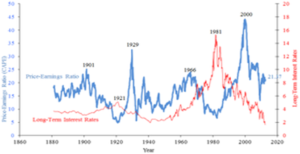Image source: advertise.ie
Business owners need to make big accounting decisions on how to handle their costs. When money is spent, it should be accounted for as either an expense or capitalize the cost. A company’s spending can have a significant impact on its profitability and balance sheet. If the company’s expenses are growing, expensing results in greater R&D expense. The expenditures are treated as operating costs rather than capital investments.
If the business expense the costs, these costs are added to the income statement and also subtracted from the business revenue in order to determine the business profit. Firms can reduce their R&D expenditures in order to increase their net income. Let’s look at the pros and cons of R&D expenses.
Pros:
1. Cash flow from operations: Expensing reduces the tax bill for the company for the short term and the costs are reported in the cash flow.
2. Economic benefits: The purpose of expensing R&D is to realize the future economic benefits of the company. Expensing boots the profitability of the business in the long term.
3. Maximize business growth: Companies that are interested in increasing the growth of their operations as well as maximizing profits from existing investment take on full expensing.
4. Increase the value of capital investments: Expensing increases the present value of capital deductions for capital investment. If a business capitalizes on its R&D, there will be more assets in the financial position of the company and this increases the company’s value.
5. Receive tax treatments: R&D expensing results in disparate tax treatments in the investment. This increases the amount of income available for the company to undertake other business operations.
6. Match expenses: It enables the company to fairly state the number of expenses incurred during a particular accounting period and match it with the revenue the asset intends to generate.
It ensures companies do not overstate or understate their operational costs.
7. Determine the financial position of the company: Expensing items that do not have alternative future use to the company allows the company to know the status of their financial position in a particular financial year.
8. Discounted cash flow: It helps the company to value its investments based on future cash flows. The reinvestment rate on these capital expenditures is computed to determine the return on capital and it includes the research and development expenses.
9. Return on capital: Increased R&D expenses and reclassifying the R&D to capital expenditure push the operating income of the company leading to an increased return on capital.
10. Reduces R&D outlay: Expensing causes firms to reduce their R&D outlays and increase their earnings on all capital expenditure.
Cons:
1. Reduce shareholder equity: Expensing on research and development reduces the total assets of the company and also lowers the shareholder’s equity.
2. Financial ratios: Decision to expense on some company’s assets leads to a high operation- efficiency ratio.
3. Trial and error: R&D involves trial and error; companies are not allowed to capitalize on research and development costs because there are no reliable means of measuring the economic benefits of such costs.
4. Net income: Expensing costs have an immediate impact on the company’s income and can drag down the income of the business. Companies that use expensing method have variable reported income.
5. Capitalization of legal fees: Although R&D costs are considered as expenses, the legal fees used in acquiring them should be capitalized.
6. Capitalization of some assets: You should be careful when dealing with a repair or upgrade costs. If the value of the asset increases or its lifespan expands, then these costs should be capitalized and this affects the financial statements of the company.
7. Reduces company’s assets: Treatment of R&D expenditures as operating expenses reduces the assets. If a company’s patents emerge as a result of internal research, they’re not shown as assets in financial statements.




Is your content acceptable for use in school papers?